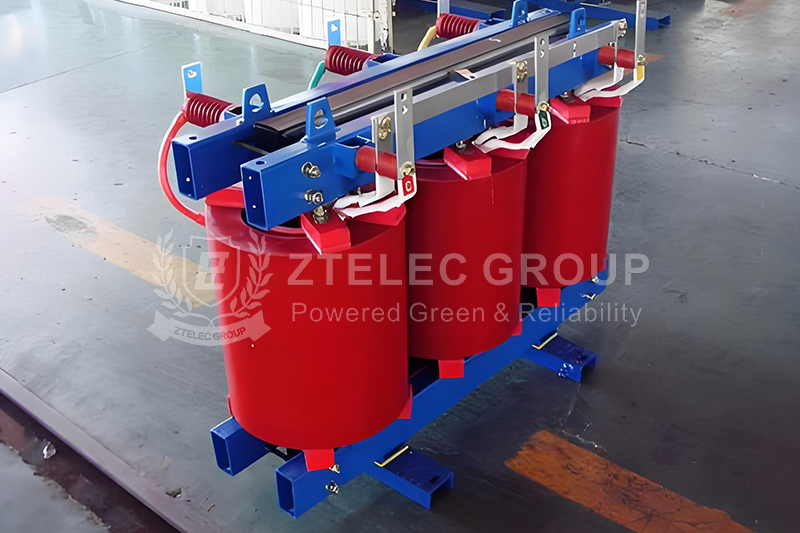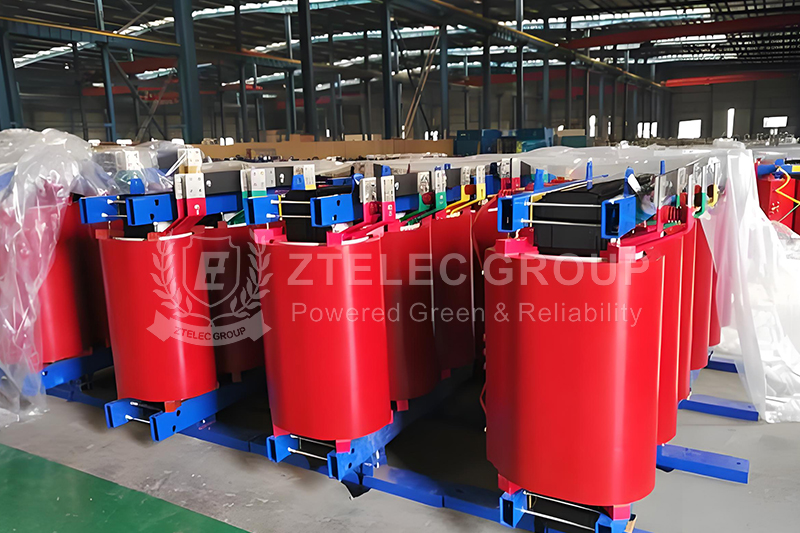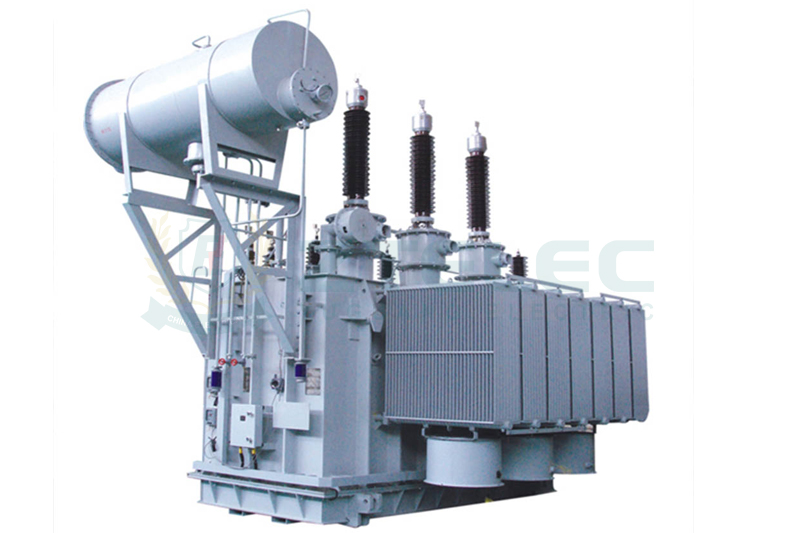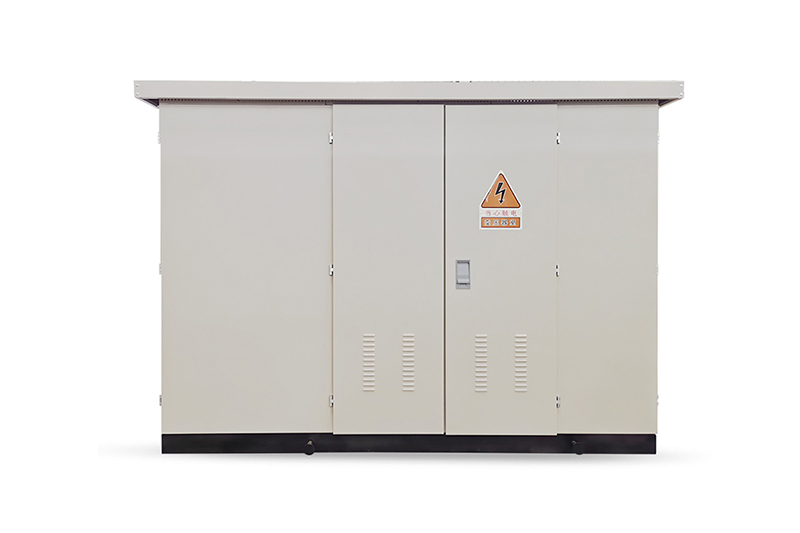Dry-Type Transformers: Features, Installation & Commissioning Guidelines
Time:2025-04-10 Auther:ZTelec-www.ztelectransformer.com
In power systems, dry-type transformers serve as crucial electrical equipment, playing a vital role. Compared to traditional oil-immersed transformers, dry-type transformers possess unique features and advantages. The proper application of their installation and commissioning techniques is essential to ensure their normal operation.

Characteristics of Dry-Type Transformers
1. Structural Features
Unlike oil-immersed transformers, dry-type transformers do not have an oil tank or insulating oil. Their core and windings are typically exposed to air or encapsulated with special insulation materials. This design results in a more compact and lightweight structure, making installation and transportation more convenient. Additionally, because there is no oil, it also avoids safety hazards such as fire and explosion caused by oil filling.
2. Performance Features
Excellent Insulation Performance: Dry-type transformers use high-quality insulation materials such as epoxy resin, providing superior electrical insulation and mechanical strength, effectively preventing winding short circuits and grounding faults.
High Heat Dissipation Efficiency: These transformers typically rely on natural or forced air cooling, offering efficient heat dissipation and stable operation even in high ambient temperatures. Their lower temperature rise also extends service life.
Strong Overload Capacity: Dry-type transformers can withstand significant overload currents for short durations, making them well-suited for fluctuating power system demands.
3. Environmental Benefits
Since dry-type transformers do not use insulating oil, they avoid the risk of soil and water contamination from oil leaks. Moreover, they produce no harmful substances during manufacturing or operation, aligning with modern environmental sustainability requirements and offering eco-friendly advantages.

Installation & Commissioning Techniques for Dry-Type Transformers
1. Installation Techniques
Foundation Installation: A sturdy and level foundation must be prepared according to the transformer’s dimensions and weight. Reserve the mounting holes for the transformer on the foundation, lift the transformer onto the foundation, and secure it with bolts.
Electrical Connections: Wiring should follow the electrical diagram, ensuring secure and reliable connections for both high-voltage and low-voltage sides to prevent loosening or overheating. Correct phase sequence must be verified to avoid operational failures.
Grounding Installation: A reliable grounding system with resistance meeting design specifications is essential. Properly sized and securely connected grounding conductors are critical for safe operation.
2. Commissioning Techniques
Insulation Resistance Test
After installation, measure the insulation resistance between windings and ground, as well as between windings. Values must comply with standards; if too low, identify and rectify the cause.
DC Resistance Test
Check winding resistance to detect short circuits or open circuits. The imbalance ratio should meet specified limits.
No-Load Test
Conduct this test at rated voltage to measure no-load current and losses, verifying the integrity of the core. Test duration should adhere to regulations.
Load Test
Under loaded conditions, measure voltage, current, and power to assess performance. Gradually increase load while monitoring temperature rise to ensure stable operation at rated capacity.




